What Are the Drawbacks of Manual Supplier Search?


Key Takeaways:
Are you still manually searching for suppliers?
With so many automated tools available—ones that could save your team hundreds of hours a year—why do the heavy lifting?
We get it. Adopting new tools isn’t always easy.
That’s why you need solid reasons to make the switch.
Today, we’ll break down the top five reasons why manual supplier search is holding you back, and how automation can bring your team into 2025.
Let’s dive in!
Procurement teams invest significant time and effort in manual supplier searches, draining both resources and team capacity.
According to McKinsey, completing a single supplier search can take up to three months, with more than 40 hours of work logged.
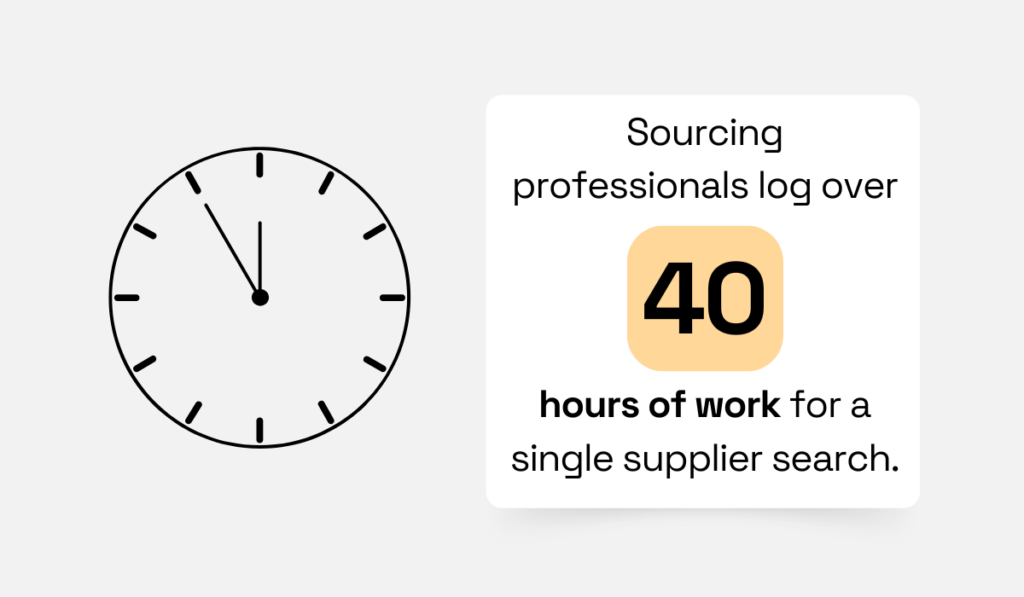
Illustration: Veridion / Data: McKinsey
And after all that?
You might only find a few dozen suppliers that meet the criteria.
Such long supplier-searching processes slow down decision-making, increase operational costs, and limit agility.
According to Indeed, sourcing specialists in the U.S. make $26.29/hour on average.
Multiply that by 40 hours of work, and you’re paying over $1,000 for a single supplier search in labor costs alone.
On top of that, slow sourcing often doesn’t allow companies to meet internal or external requirements on time, leading to potential frustration for both teams and customers.
The 2022 TealBook study confirms the negative effects of slow supplier identification.
It found that slow supplier identification often causes project delays, budget overruns, and failures to meet demand.
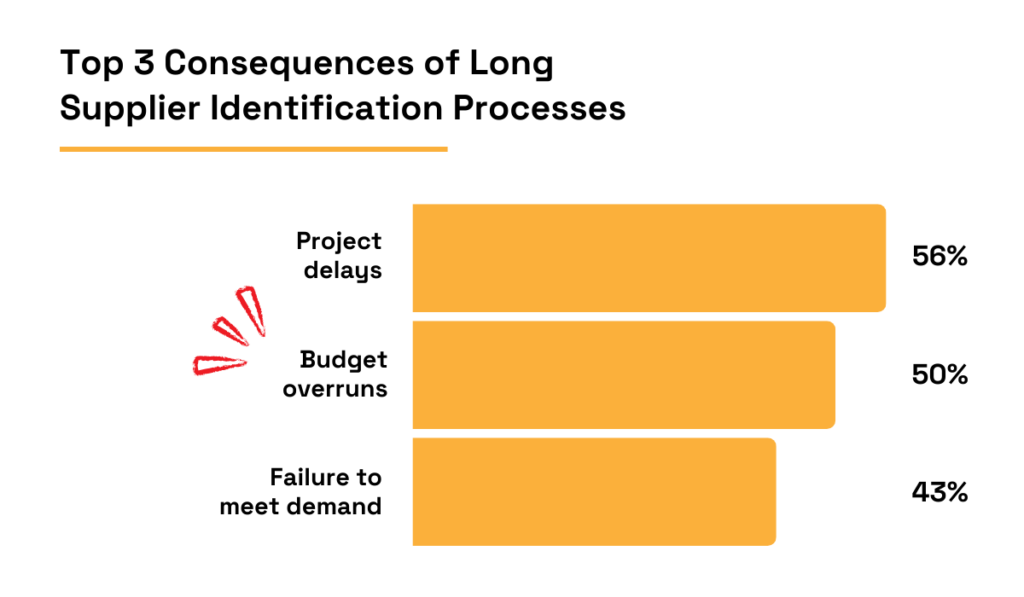
Illustration: Veridion / Data: TealBook
This shows that companies aren’t just wasting money on bloated overhead.
They’re also actively losing money by burning through budgets and not providing customers and teams with what they need, when they need it.
Luckily, these issues can be easily solved with the right tools.
Companies should consider adopting sourcing solutions that provide verified, up-to-date supplier data and automate crucial data-related processes, like validation and consolidation.
Veridion delivers all of the above.
Our big data engine powers a global database of 120 million+ suppliers across 250+ locations, covering 200 million products and services with a rich set of supplier data points, including:
With weekly data updates, procurement teams can eliminate the need for manual fact-checking—saving time and improving accuracy.

Source: Veridion
Veridion makes finding the right suppliers easy—no matter how complex your requirements.
With its AI-powered feature, Scout, you can describe the suppliers you need just like you would to another human.
Simply enter your requirements in natural language, and Scout will instantly search Veridion’s extensive database.
Within seconds, you’ll receive the most relevant results.
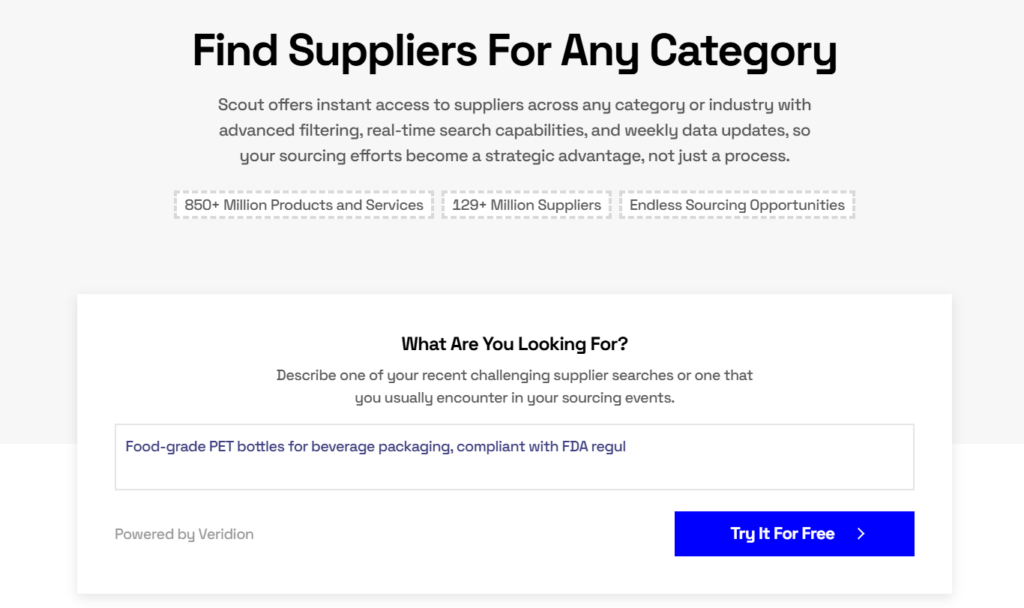
Source: Veridion
Big data platforms like Veridion don’t just help teams save time and money, but also find more suitable suppliers.
And with Veridion continuously gathering and updating data from multiple sources, procurement professionals can make decisions with greater confidence.
Now, let’s talk about why this matters.
Another study commissioned by TealBook in 2020 revealed that 81% of procurement and sourcing executives aren’t completely confident in their supplier data.
Newer research indicates that the situation hasn’t really improved since then.
For example, a 2024 experiment from BabelusAI showed that about 60% of a company’s supplier data is pretty much worthless.
Some of it is outdated, some is duplicate, and some is simply irrelevant.
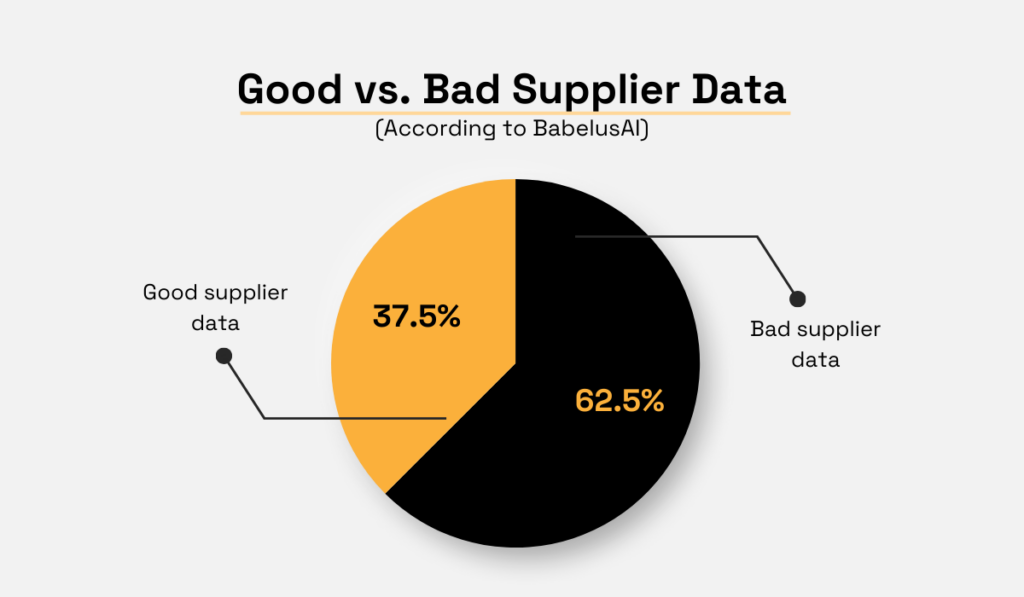
Illustration: Veridion / Data: LinkedIn
So, many companies are still operating with unreliable supplier data—but why?
How do they end up with it in the first place?
The root cause, once again, is in manual processes, both during and after data collection.
After collecting supplier data, teams often fail to adequately verify its relevance or remove duplicates.
Even worse, they collect the data manually, frequently relying on unreliable sources.
Based on our internal data, 80% of private companies search for suppliers through Google, basic databases, and word-of-mouth.
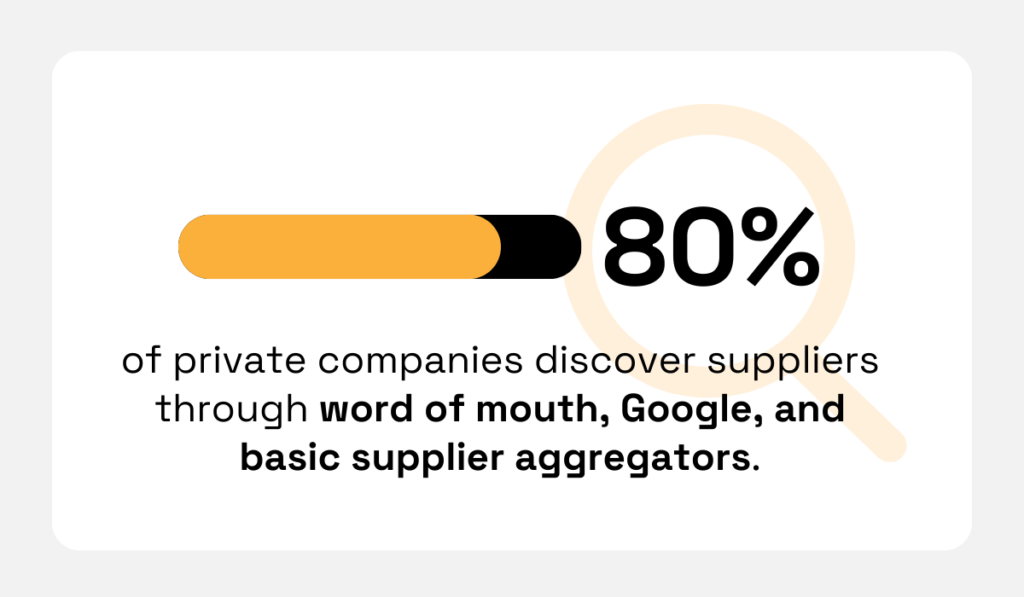
Source: Veridion
Data from these sources is typically unverified or not as reliable as it should be.
That’s how many companies end up relying on outdated, incomplete, or just downright false information.
And that’s a big problem.
Your data is the foundation of everything you do.
The suppliers you choose—and the decisions you make—depend on its quality.
That’s why it’s so important to ensure you have data you can truly rely on.
To mitigate these risks, consider procurement platforms, more reliable data sources, or data enrichment services to ensure you’re working with accurate, trustworthy supplier information.
One big consequence of dirty data—often a result of manual supplier searches—is the inability to accurately evaluate suppliers.
It’s like trying to make accurate calculations using the wrong numbers.
No matter how good your method is, the result will always be wrong.
And the worst part?
Many procurement teams don’t even realize they’re working with flawed data.
Giles Breault, the co-founder of The Beyond Group AG, a research and advisory firm for procurement, agrees.
He highlights that many organizations unknowingly make decisions based on bad supplier data.
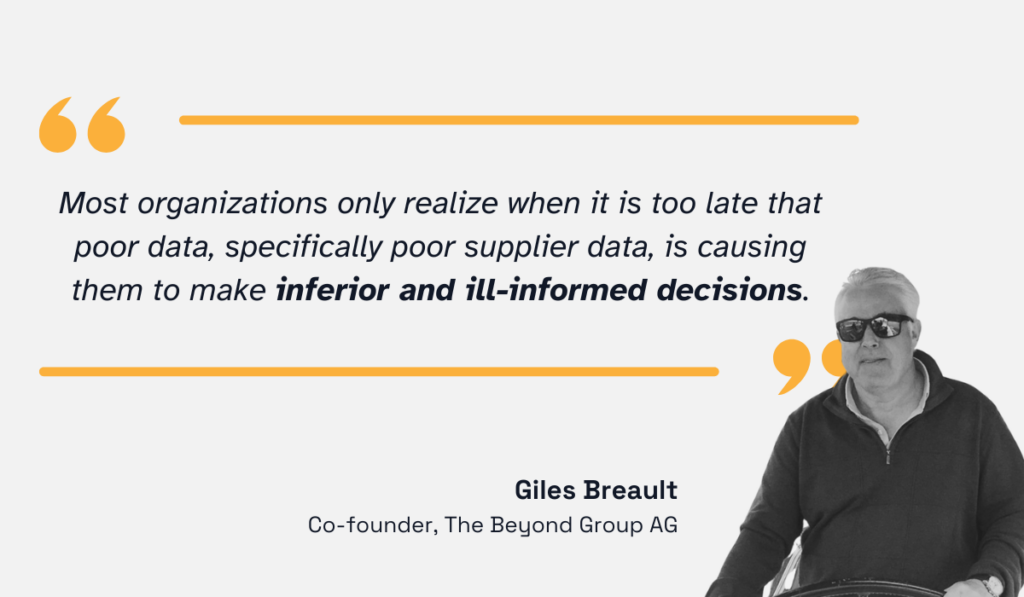
Illustration: Veridion / Quote: HICX
By the time they realize this, the damage is usually already done—the contracts are signed and the deals are locked in.
Research further suggests that many procurement leaders overestimate the quality of their data.
A HICX survey found that 53% of procurement leaders believe their data is, quality-wise, in the top 20% of their industry.
But here’s the paradox: how can 53% of leaders be in the top 20%?
They can’t.
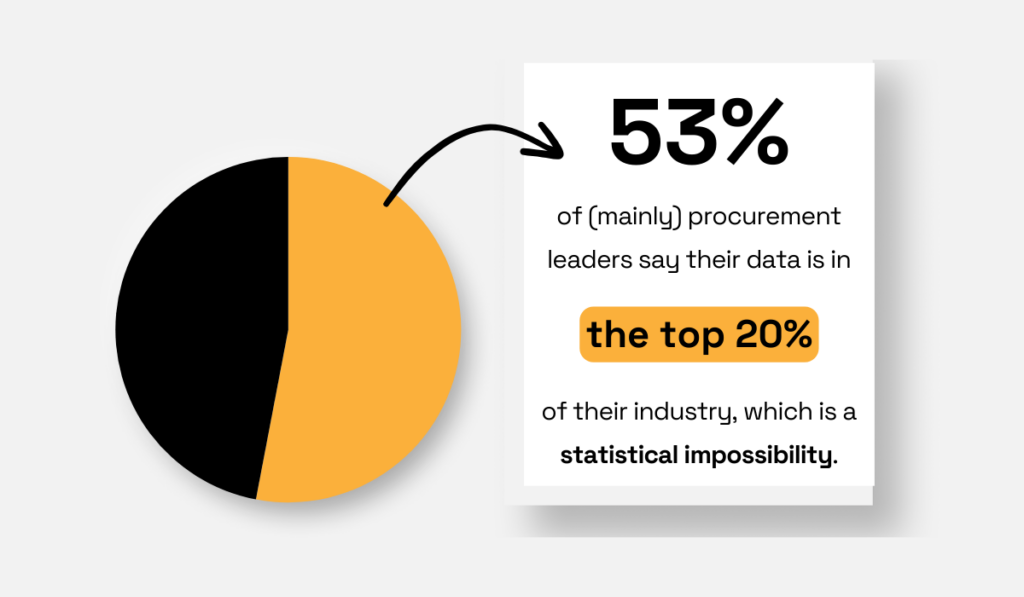
Illustration: Veridion / Data: HICX
As HICX concludes, this suggests that many teams operate under a dangerous false sense of security.
But overconfidence in bad data leads to blind spots.
When teams believe their data is already accurate, they’re less likely to question it, making errors harder to detect.
This is especially risky when data is gathered through manual searches, which often rely on unreliable sources like Google or basic databases.
Manual processes increase the chances of collecting outdated, incomplete, or inaccurate supplier information, leading to faulty supplier evaluations.
So, once again, everything starts with having the correct data.
Without it, you can’t accurately evaluate, compare, or select suppliers.
Bad data leads to bad decisions, and bad decisions increase the risk of working with the wrong suppliers.
By now, you probably realize that relying solely on manual supplier searches just doesn’t cut it.
But this is even more true for growing companies.
As mentioned, finding the right supplier takes, on average, 3 months. And if you need to find multiple suitable suppliers, the search can take much longer.
The 2024 State of Procurement Data Report by Amazon Business shows that procurement teams agree these processes are too time-consuming.
37% of procurement professionals wish they could spend less time on supplier sourcing—even for simple purchases, let alone for entirely new categories or areas of business.
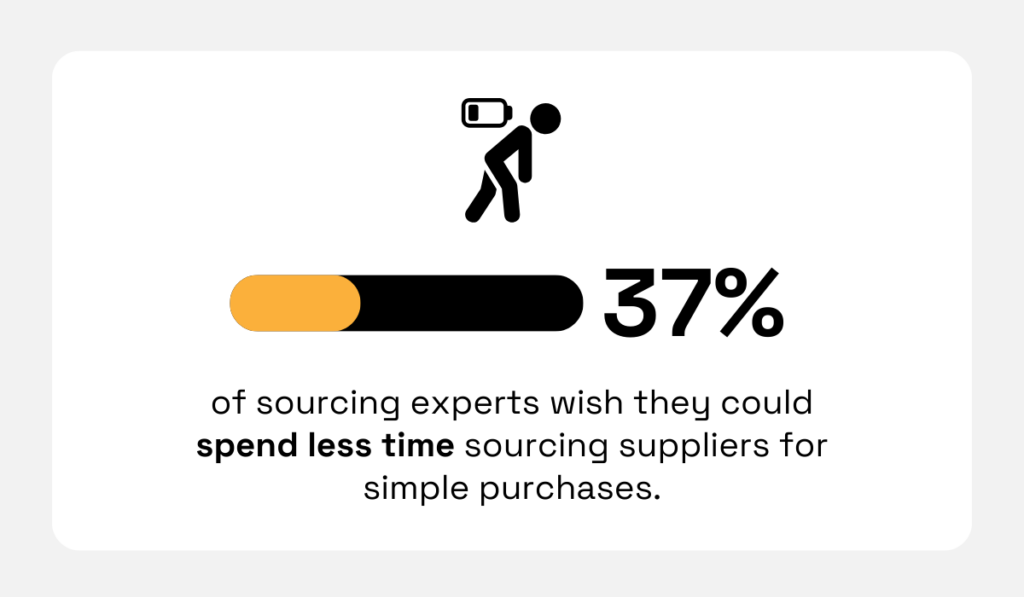
Illustration: Veridion / Data: Amazon Business
The inefficiency of manually sourcing suppliers becomes even more evident when companies expand into multiple regions.
Identifying suppliers in new areas is extra challenging, as many procurement teams aren’t sure where to start.
In these cases, they often turn to unverified sources, like Google, to find local suppliers.
To make matters worse, procurement teams are often under immense pressure.
Leadership expects new suppliers to be found quickly—yet these suppliers must also meet a growing set of complex criteria as the business expands.
Manually checking all those boxes? Nearly impossible.
The same study from Amazon Business reveals that 85% of respondents find it difficult to meet sustainability goals, largely because they struggle to identify suppliers that align with the right sustainability practices.
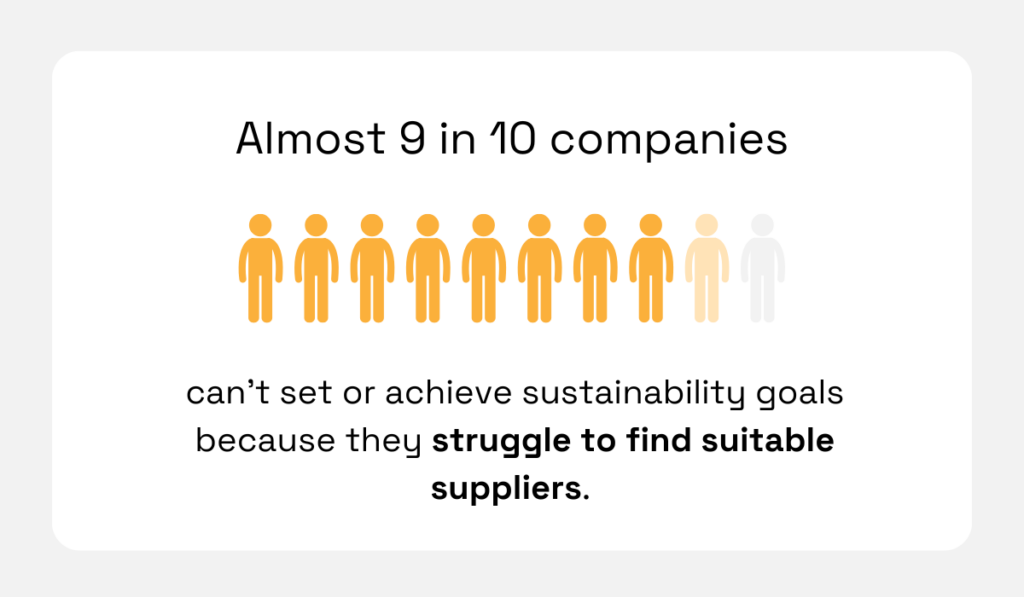
Illustration: Veridion / Data: Amazon Business
Digital tools can solve these issues and enable supplier discovery at scale.
Just consider how Audi AG simplified and scaled its supplier sourcing processes using a digital scouting solution.
Audi decided to shift from diesel-driven to more eco-friendly industrial towing vehicles.
The challenge?
Finding suppliers for a complex product in a niche market, with strict requirements and a limited pool of potential suppliers.
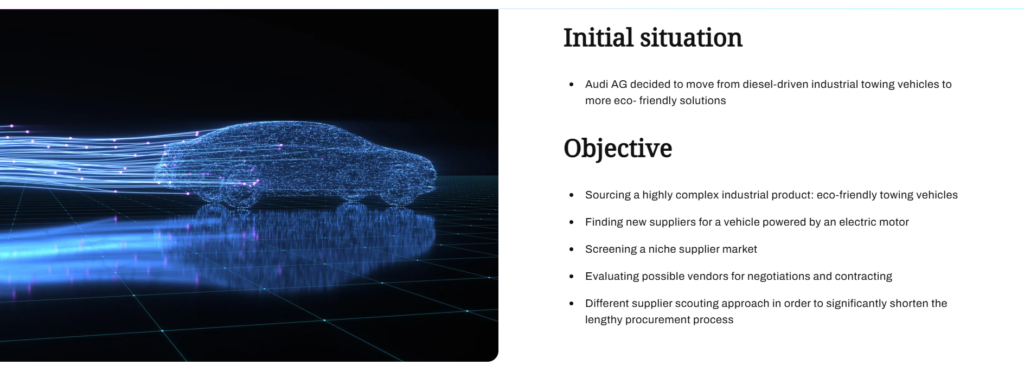
Source: Scoutbee
Thanks to the scouting solution Audi used, they were able to screen 180 times more suppliers than using traditional sourcing methods.
The purchaser in charge spent a total of just 6 hours working on the project, far less than the usual 40 hours, even a less complex search would require.
The moral of the story?
Digital solutions make it easy to find suppliers at scale.
With them, supplier sourcing takes a fraction of the time compared to manual methods.
On top of that, finding suppliers that meet complex criteria is often nearly impossible to do manually.
Sourcing solutions fix these issues and accelerate the process.
Manually comparing suppliers is labor-intensive and time-consuming.
That’s why procurement teams often deprioritize thorough comparisons or, worse, avoid searching for new suppliers altogether.
As McKinsey notes, many companies opt for the easy way out.
Instead of finding new, potentially more cost-effective suppliers, some just stick to the ones they already have to avoid grueling search processes.
Renewing contracts, even if they’re less than desirable, is just easier.
The downside?
Teams are sacrificing spend optimization for the status quo.
McKinsey also found that companies that select the best suppliers on the market typically achieve 5-10% lower costs than their competitors.
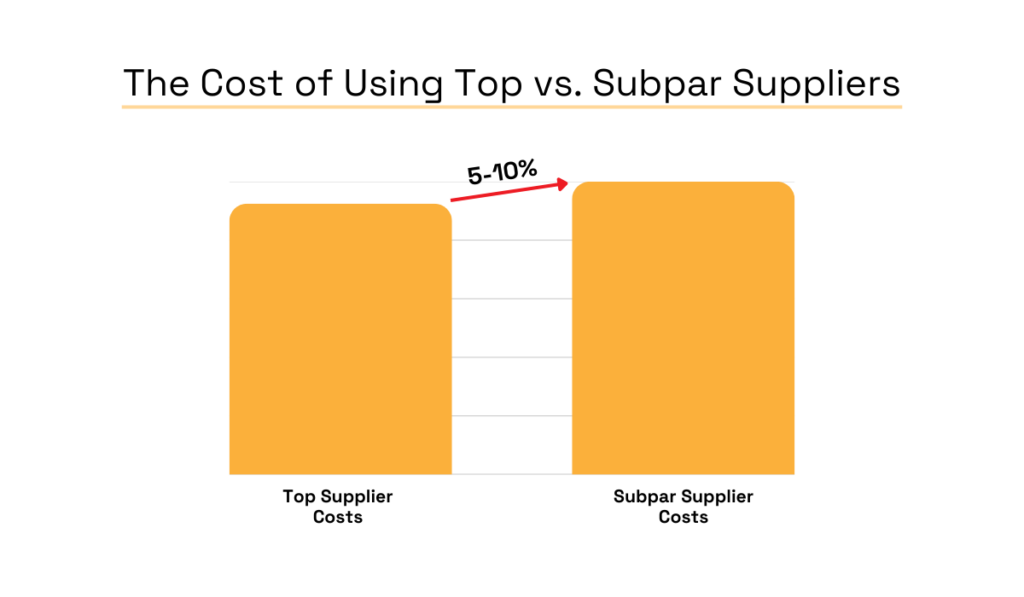
Illustration: Veridion / Data: McKinsey
Additionally, they also reduce key risks, like over-relying on one supplier, by as much as 20-50%.
In contrast, by not optimizing their supplier base, companies are leaving money on the table.
Without digital procurement solutions, it can be difficult to even identify opportunities to cut costs in the first place.
Many teams are too bogged down by other, slow manual processes and a potentially heavy workload.
Simply put, they don’t have enough time to tackle more strategic tasks, including identifying cost savings opportunities.
Research confirms this.
In 2023, The Hackett Group estimated that the workload for procurement will increase by 10.6%.
JAGGAER’s Rising Influence: The State of Procurement 2024 further revealed that nearly half of procurement teams believe inefficient manual processes are preventing them from fully addressing C-suite priorities, like optimizing spend.
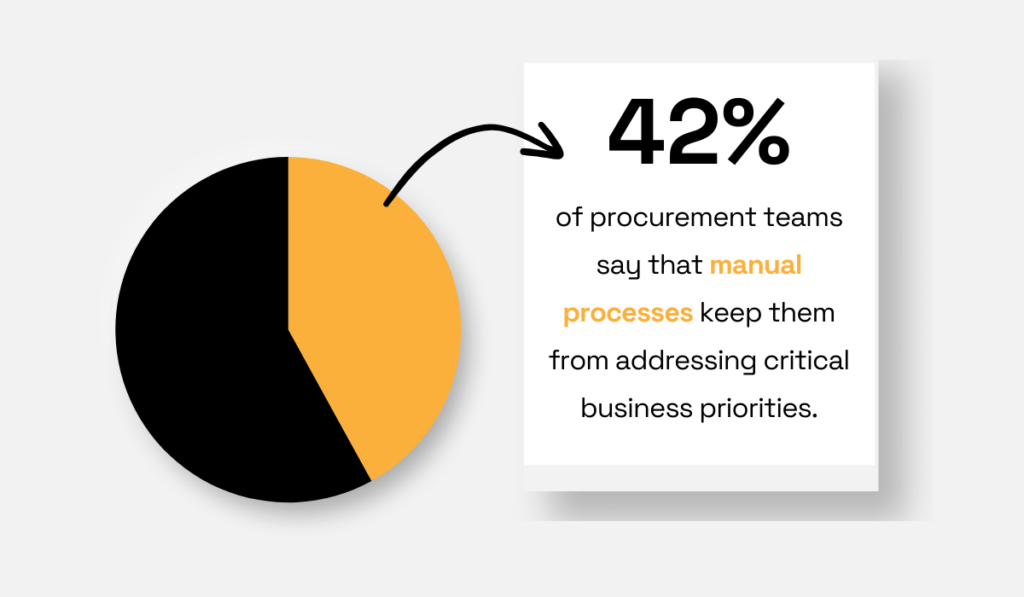
Illustration: Veridion / Data: JAGGAER
Given these challenges, it’s clear that companies must streamline supplier search.
It’s unrealistic to expect procurement to make the best, most cost-effective supplier decisions manually, especially when a company is growing or expanding to new markets.
The reality is, if you don’t automate supplier search, you’ll likely end up with inflated costs.
And with so many powerful solutions on the market, especially those AI-powered, there’s no excuse for sticking to manual processes.
If you are, you’re just missing out on opportunities to improve your results.
At the beginning, we promised to show you why manual supplier search holds you back.
Hopefully, we’ve delivered on that promise.
Manually searching for suppliers is an incredibly resource-intensive, time-consuming process with few benefits.
It equips you with less reliable data, increases the risk of errors, and makes scaling supplier discovery almost impossible.
Additionally, it keeps you from leveraging strategic opportunities, like optimizing spend.
So, if you’re still relying on manual supplier search, it’s time to level up your sourcing game.
Leave outdated processes behind and empower your team with tools that make supplier search faster, easier, and future-ready.
You’ve got this!